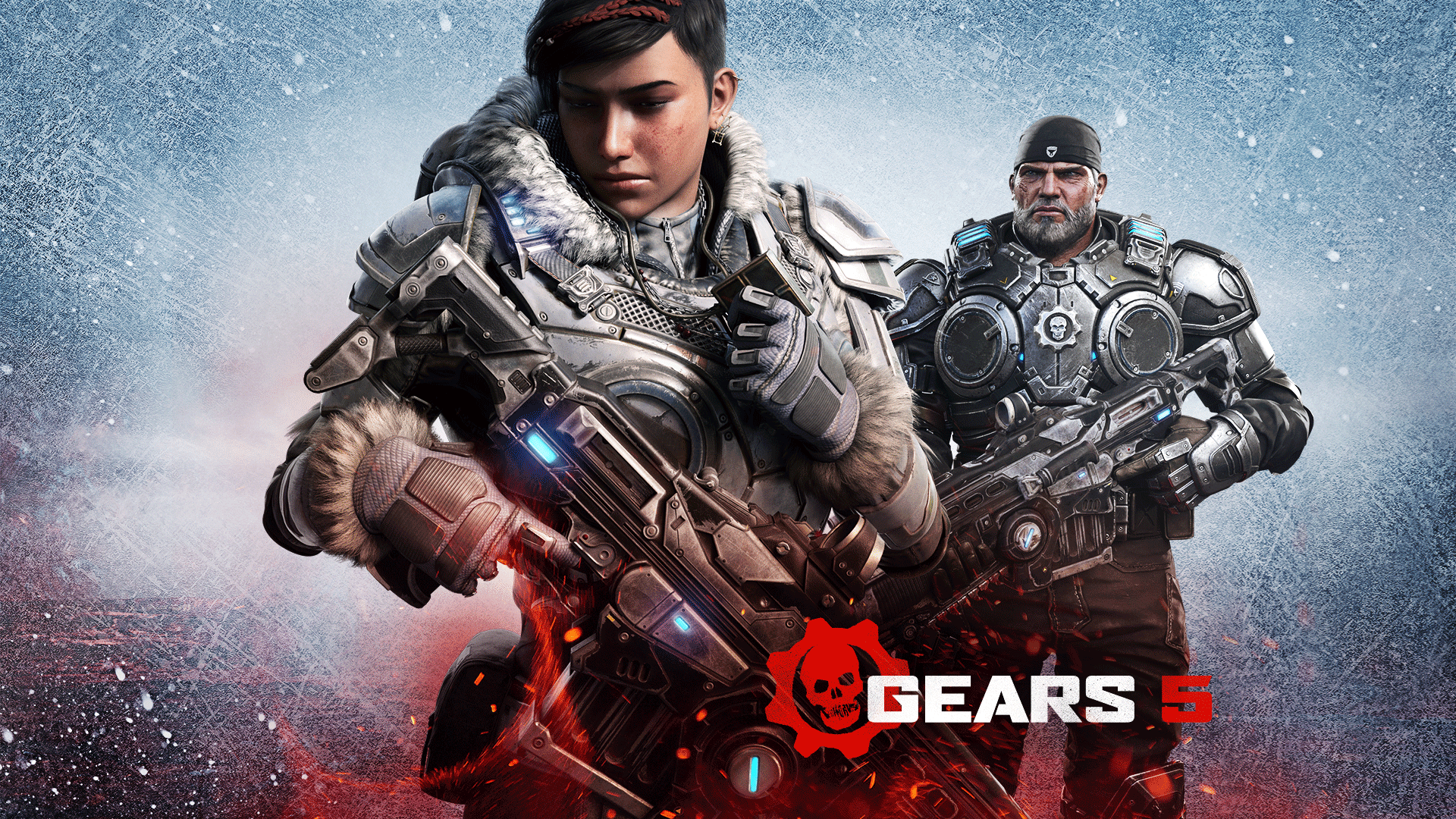Behind the scenes of Gears of War 5 with Greg Mitchell
One of the most well-known video game franchises out there, Gears of War is a third-person shooter game with action-packed scenes and breathtaking cinematics. Animatrik's state-of-the-art facilities in Vancouver and LA were more than ready to handle the stunt-heavy motion and performance capture sessions.
Led by Cinematics Director, Greg Mitchell, the crew was able to hit the ground running at Animatrik’s studio as the shooting for Gears of War 5 commenced, despite a tighter production schedule. Thanks to the familiarity with the studio equipment from previous production cycles, the entire crew worked together like a well-oiled machine, with many actors returning to Gears 5 from the previous games.
“The friendly atmosphere on set and the occasional downtime to play around and have a laugh with the crew makes me look forward to working with Animatrik again,” tells us Greg Mitchell.
Collaboration on the floor-bringing together a cohesive performance
The great energy on the floor was supported by meticulous planning during the pre-production meetings. Starting with the more prop-heavy scenes and then moving to open volume sequences as the day progressed helped the team streamline the transitions between scenes, saving valuable time and enabling the actors to get the most out of their time on the floor.
Greg designed the choreography, completed the blocking and supervised the performance during these sessions. He worked closely with the narrative director, Bonnie Jean Mah, to ensure they hit the narrative beats they needed, and that the performances stayed in sync with the storytelling. While the mocap actors have the previously recorded voiceovers as anchors for the performance, changes often happen as the actors bring the character’s physicality to life.
“It’s always different when you’re on set,” Greg explains. “You’re matching a script to a voice and then to the mocap actor’s performance, and melding it all together seamlessly is a process that often calls for adjustments. Maybe something in the script just isn't coming across as well as it should, or it feels like they’re saying too many lines when there’s a way to get across the message with a gesture. The narrative director helps make those changes and get the best out of the scene. Having the opportunity to make these changes on the fly is amazing because we can make sure that we’re telling the best story we can.”
Acting out emotional scenes in particular is a collaborative process. When a character comes out of a high-energy moment and breathes heavily as a result, or is about to jump into a fight, making those moments feel natural is crucial for the immersivity of the game. The actors get the brief, the interpretation of the voice actor guides them, and they also receive additional instructions from the directors on the floor. The magic happens as all these aspects come together and the actors fully embody their characters on the stage.
“While the actors know that this will be superimposed on a 3D character, they still put their heart and soul into what we're doing on the floor. When you have a good cast and they understand what you're trying to present, they all go above and beyond to give us the best performance on the floor, and you definitely see it in the final game,” says Greg.
Motion capture and the wider production workflow
The utmost priority during mocap sessions is getting the best performance on the floor from the cast and then applying the collected data to the characters later on. Recording every little nuance of what the actors are bringing to the floor is key, down to the small twitch of a hand, a head tilt, or even just the exact rhythm of breathing. These details can make or break a unified performance.
“We have someone on the floor embodying that character, so we want to make sure we’re getting all angles of it,” notes Greg, when asked about the most important aspect of shooting in a mocap studio. “That’s what we hope to get from good motion capture and that’s what we get from Animatrik.”
While it’s the voiceover that gets recorded first, that doesn’t fully determine the interpretation of a character. The mocap actors rely on the voiceover as an anchor but the production process is a triangular process rather than linear. Part of the reason why accurate mocap data is so important for the process is because as the directors make changes on the floor and try out different scenarios, the adjustments that need to be made ripple through the entire production workflow. After the animator ties together the performance of the mocap actor with the voiceover, the directors often complete another session with the voice actor to work through those changes made on the floor; adding in a few extra lines of dialogue or recording a different transition. In this instance, it’s the voice actor relying on the performance of the mocap actor as a guide for the scene.
Fitting these different aspects together can be a challenge but it’s imperative to get it right, especially in cases where the player is experiencing the game from that character’s point of view. Effective collaboration and accurate, high-quality data serve as the foundation for that workflow. This is why the craft of motion capture is so integral for game development and bringing beautiful 3D graphics to life. Gears of War was released in 2019 by Coalition.
Find out more about Animatrik’s projects here.

